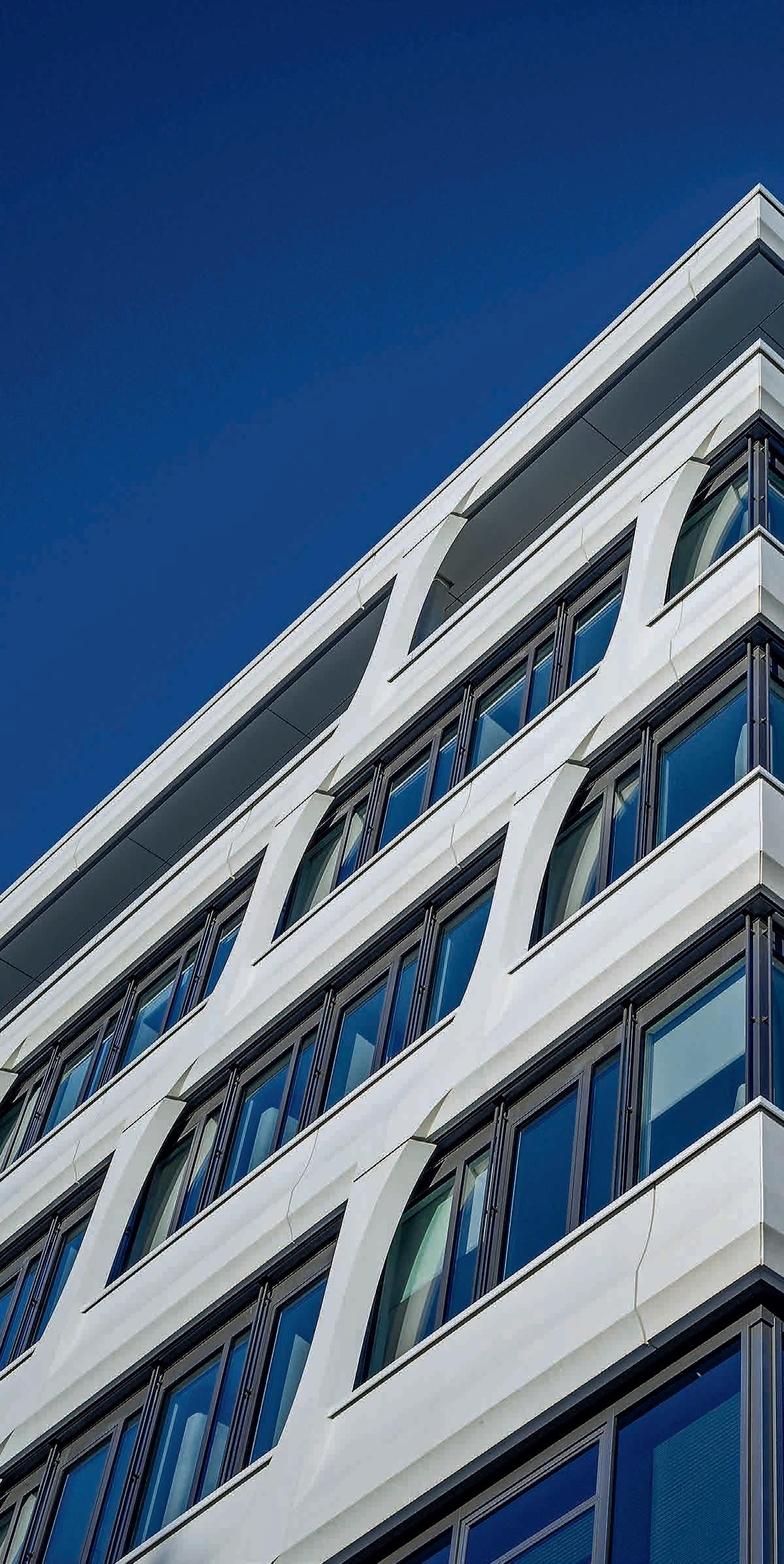HeidelbergCement at a glance 2021



In more than 50 countries around the world, the name HeidelbergCement stands for competence and quality.
Since the company was founded in 1873, HeidelbergCement has grown from a regional cement manufacturer with a single plant in Heidelberg into one of the world’s leading building materials groups, with roughly 53,000 employees working at 3,000 loca tions in more than 50 countries on five continents.
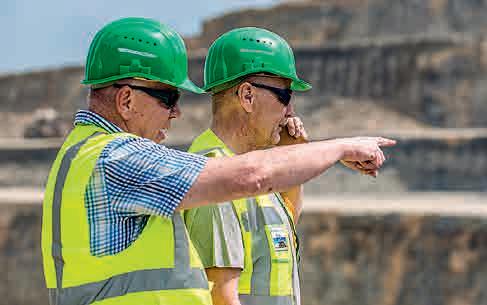
Our core activities encompass the production and distribution of cement and aggregates, the two essential raw materials for the production of concrete and asphalt. Our Group Services business unit focuses on global sea trade in building materials such as cement and clinker. HeidelbergCement is divided into five geographical Group areas: Western and Southern Europe, Northern and Eastern Europe-Central Asia, North America, AsiaPacific and Africa-Eastern Mediterranean Basin.
Cover: HeidelbergCement headquarters, Heidelberg, Germany: Facade made with TioCem®, which reduces the level of pollutants in the air.
Left: Schelklingen cement plant, Germany
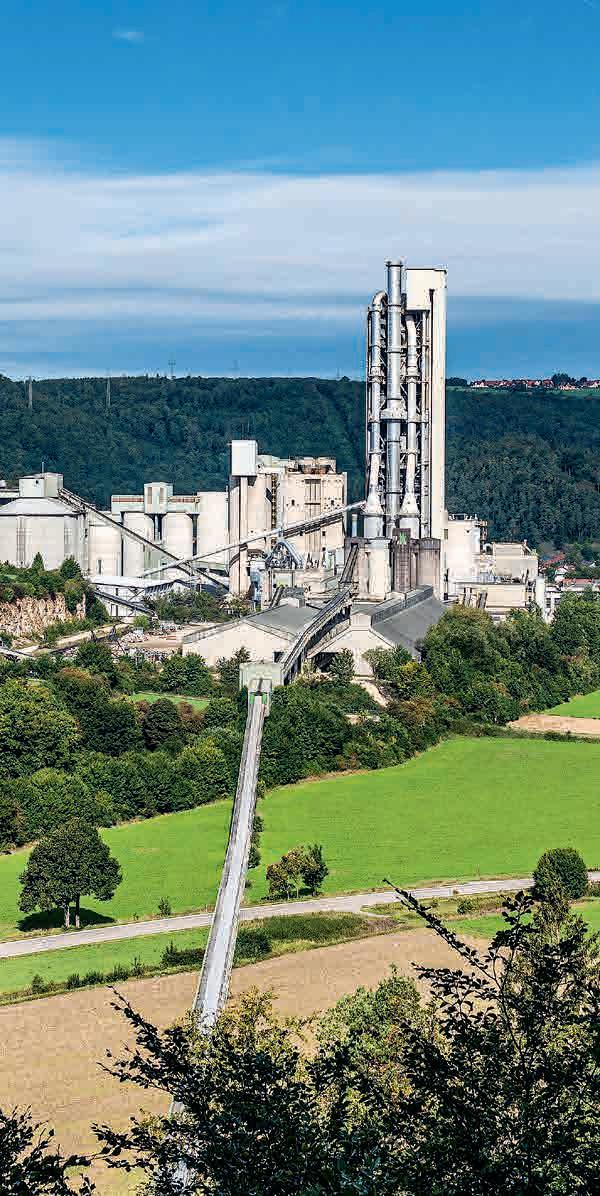
For nearly 150 years, HeidelbergCement’s building materials and construction solutions have contributed to progress worldwide.
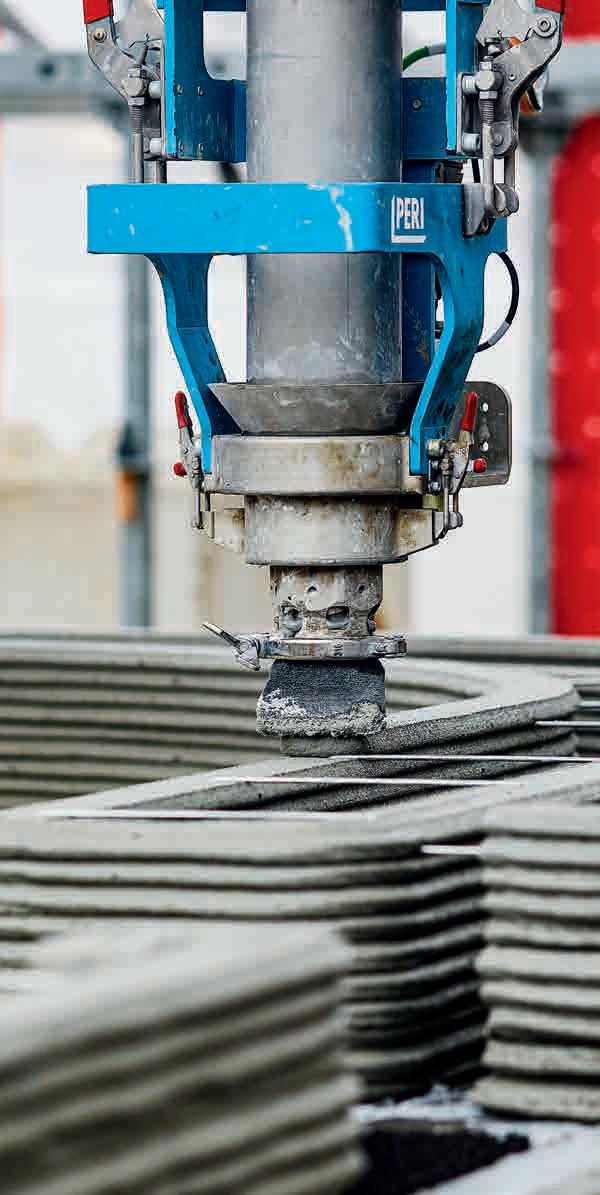
Now, the foundation for the future of the company has been laid, as expressed in our statement of purpose newly defined in 2020: “Material to build our future”.
This statement stands both for our intention to develop and produce innovative (building) materials for the future and to play a material role in the future. Responsibility for the environment is at the heart of all we do at HeidelbergCement. The company aims to be the industry leader on the road to carbon neutrality. HeidelbergCement stands for long-term profitability through operational excellence, engagement and openness for change as well as close partnerships with our customers and stakeholders.
Four culture principles form the basis for achieving these goals:
n Be stronger together !
n Get the customer excited !
n Unleash innovation !
n Think and act long term !
Right: Innovative 3D printing
from HeidelbergCement
a residential
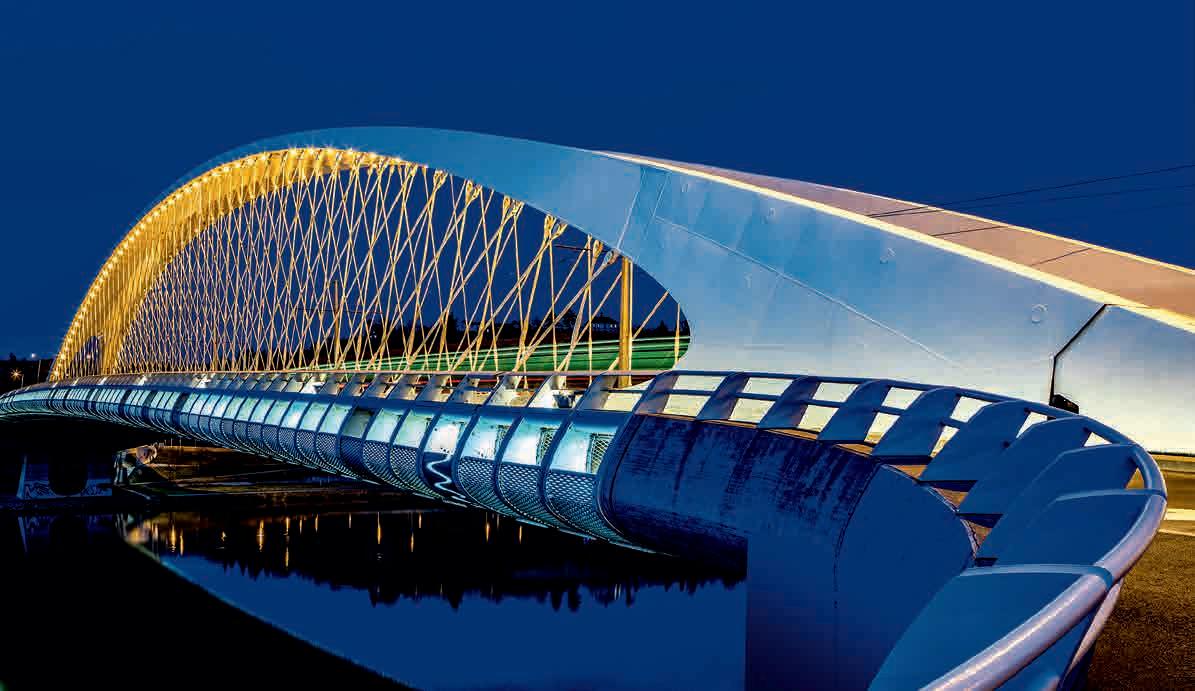
From skyscrapers to subway tunnels: Concrete will continue to be the predominant building material for construction of urban infrastructures. Other building materials, such as wood or metals, can be a useful addition. But a complete replace ment of concrete is hardly conceivable, especially considering the quantities required. Let’s look at the properties of concrete that support sustainable construction: Its high heat absorp tion capacity makes it possible, for example, to use ceilings and walls as cold or heat accumulators, significantly reducing energy consumption for cooling and heating. Concrete is also an extremely durable building material. It was already used by
the Romans 2000 years ago, where it was known as “Opus Caemetitium”, to build famous structures like the Colosseum or the Pantheon in Rome.
Concrete is a kind of artificial stone, composed mainly of sand and gravel, water and – of course – cement, which serves as a binder that gives the concrete its strength. The most important raw material in cement production is limestone, which is quar ried in many places around the world and in the immediate vicinity of cement plants. These plants first use the limestone to produce clinker, from which the final product, cement, is made.
The raw materials for cement production (limestone, clay and marl) are regionally extracted in quarries. Crushed to the size of road gravel, the material is then mixed and homogenised at the cement plant. After addition of further components (silica sand and iron ore), the raw crushed stone is ground to a fine meal and dried.
This raw meal is then burned in a rotary kiln at 1,450° C, setting off the chemical transformation that produces cement clinker. Fossil fuels and alternative fuels such as used tyres, plastic waste or biomass are being used for the combustion process in the kiln. The cooled clinker is temporarily stored in silos and then
ground into cement, together with additives such as gypsum and anhydrite, granulated blast furnace slag or fly ash.
The finished cement is loaded in bulk into silo trucks, trains or onto ships. A small portion is filled into bags. The majority is transported directly to construction sites or to ready-mixed concrete plants, where the cement is mixed with aggregates (sand and gravel) in a ratio of 1:4 and water to form ready-mixed concrete. Special additives ensure that the concrete has certain properties, for example that it hardens particularly quickly or slowly. The finished concrete mix is delivered in ready-mixed concrete trucks.
Fossil fuels (coal)
Alternative fuels
Cyclone preheater
Calciner
Rotary kiln
Clinker
Mixer
Additives
Grinding and drying Production of cement clinkerBlending bed Additional componentsCrusherQuarry Clinker silo Additives Cement mill Cement silos Cement Aggregates (sand and gravel) Water Ready-mixed concrete truckSilo truck Bagged cement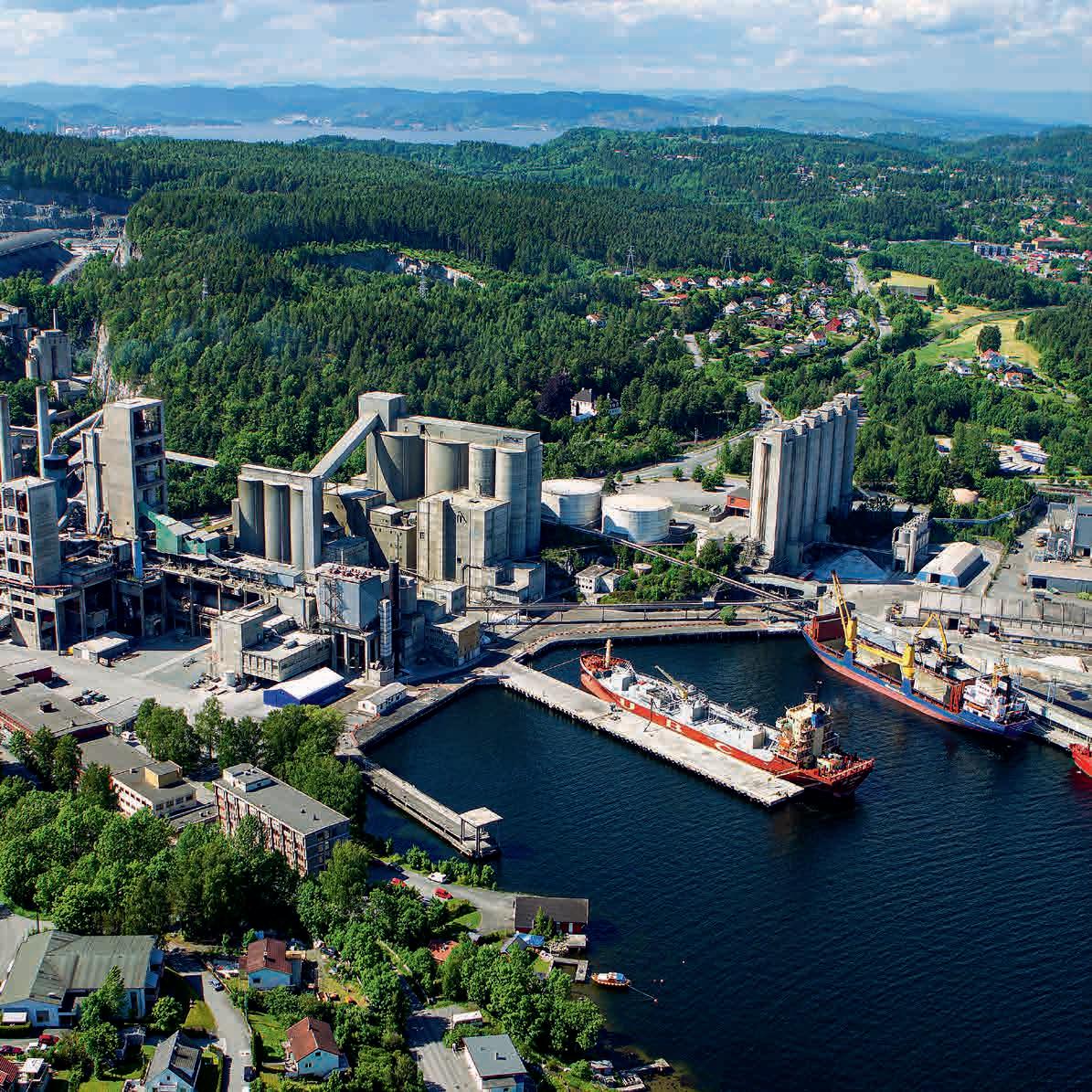
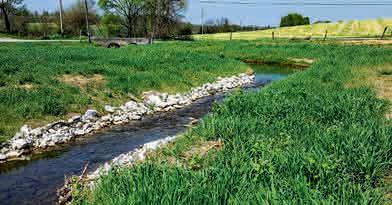
For HeidelbergCement, business success means more than outstanding economic performance. We don’t forget the importance of ecological and social responsibility.
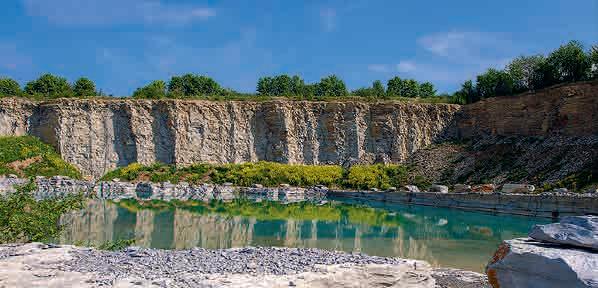

We have defined the six most important areas of action in our Sustainability Commitments 2030. They are the cornerstones of our sustainability strategy and define key focal points and goals for the period until 2030. These are:
n Driving economic strength and innovation
n Achieving excellence in occupational health and safety
n Reducing our ecological footprint
n Enabling the circular economy
n Being a good neighbour
n Ensuring compliance and creating transparency
The Sustainability Commitments 2030 will help us to grow sustainably – not only finding innovative solutions to societal challenges, but also seizing opportunities for our business. In 2020, we revised some of the targets and the associated deadlines to bring them in line with current environmental and social developments.
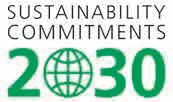
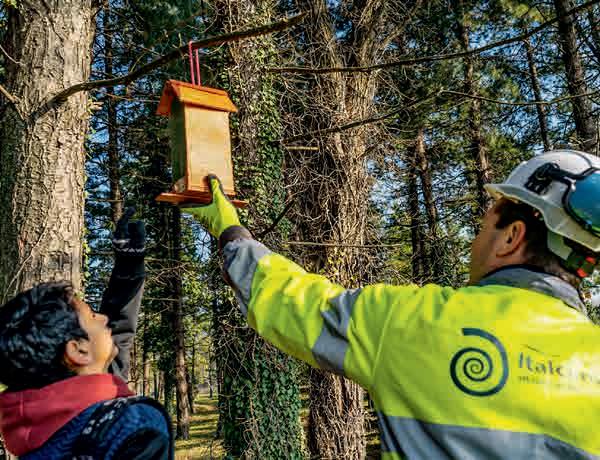
Page
full-scale
cement plant, Norway: construction
facility
industry
HeidelbergCement plays a leading role in the reduction of CO2 emissions.
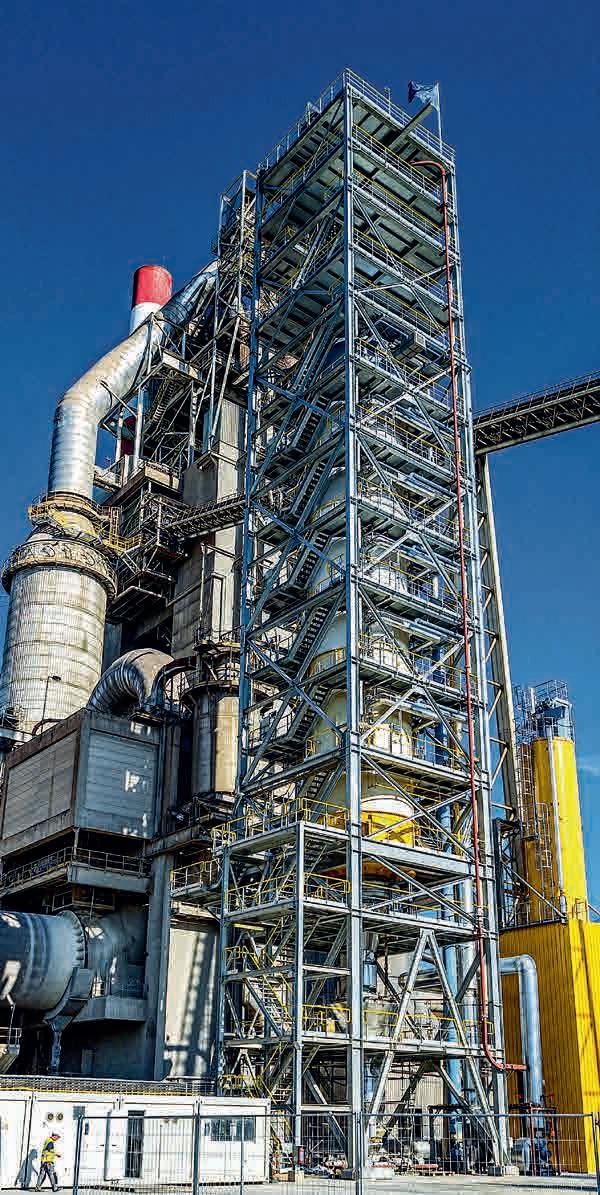
During production of the intermediate product clinker, high process emissions of carbon dioxide (CO2) are released. We are committed to our global responsibility to help limit global temperature rise to well below 2° C. HeidelbergCement aims to offer carbon neutral concrete by 2050 at the latest. But the technologies and measures applied so far are not enough, which is why we are researching and testing several new technologies for the capture, utilisation and storage of CO2. We are also intensifying circular economy, for example through concrete recycling, in order to reduce total CO2 emissions.
An important part of our corporate strategy is to significantly advance our ambitious climate targets. We intend to achieve our original 2030 target of reducing specific net CO2 emissions by 30 % compared to 1990 as early as 2025.
Algae cultivation with CO2 at the Safi cement plant, Morocco
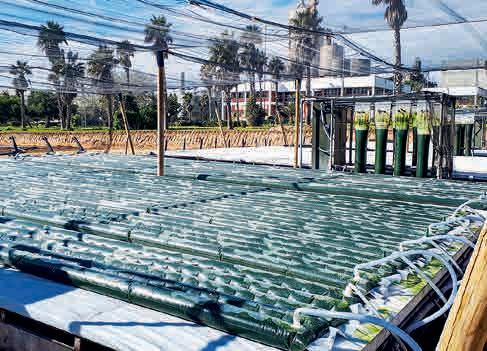
As a global Group with a strong regional presence, we are active in many local communities where we fulfil our social responsibilities.
Good relationships and partnering with the communities around our production sites is essential to the success of our business. We are deeply committed to involving our neighbours in our business activities through various forms of dialogue, such as newsletters or open days. Partnerships with local non-governmental organisa tions (NGOs) also play an important role.
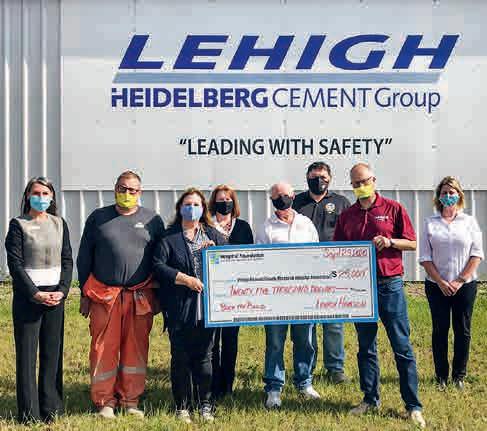
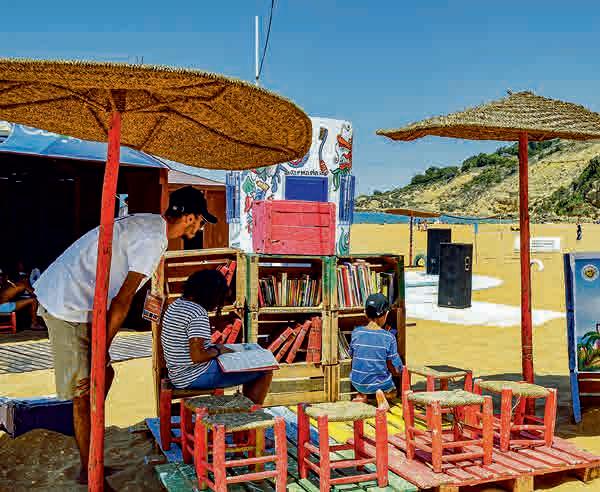
Through voluntary social engagement, we strengthen contact with and create long-term socio-economic value for our local communities. We support projects, initiatives and organisations that are active near our locations or which have a direct connection to our operations. In line with the maxim, “Think globally – act locally”, we are also committed to protecting the environment and promoting social progress.
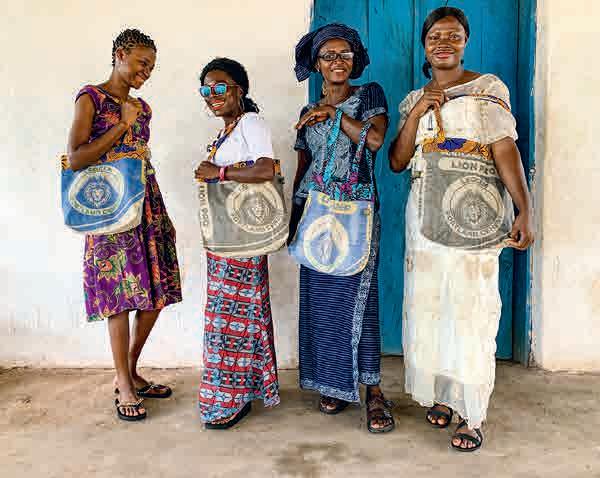
HeidelbergCement is making good progress with the digi tal transformation in production, customer relations and administration, including:
Concrete delivery in real time: With a special app, customers can track their concrete order down to the exact delivery time, enabling them to organise their construction site workflow in the best possible way.
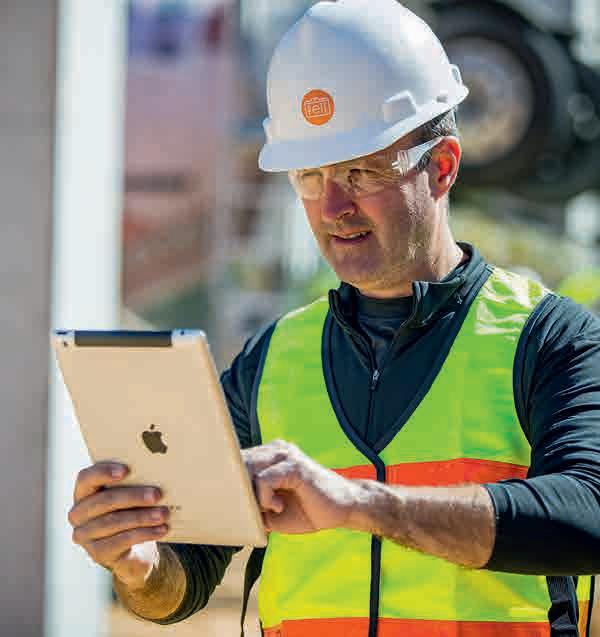
Digital cement plant: Data-driven control enables optimal and environmentally attuned operation of all production facilities,
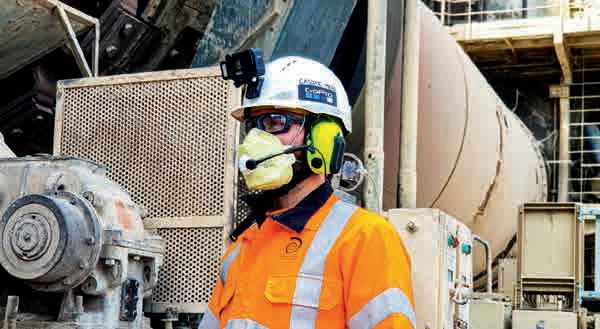
The customer can track the exact delivery time of each concrete order via mobile app.
accurate sales planning, prevention and resolution of technical problems, and minimisation of manual effort and costs.
Remote maintenance using “smart glasses”: With smart glasses, technicians can share what they are seeing with colleagues and other professionals, allowing them to carry out complex main tenance tasks without the need for several people on site. This saves time and money and has proved to be an ideal solution in the case of pandemic-related travel restrictions.
A bird’s eye view with drones: Drones allow visual access to areas that cannot be entered, monitoring of production facilities and detection of technical problems, as well as surveying of stored sand and gravel stocks. Aerial photographs and topographical data help with quarry planning.

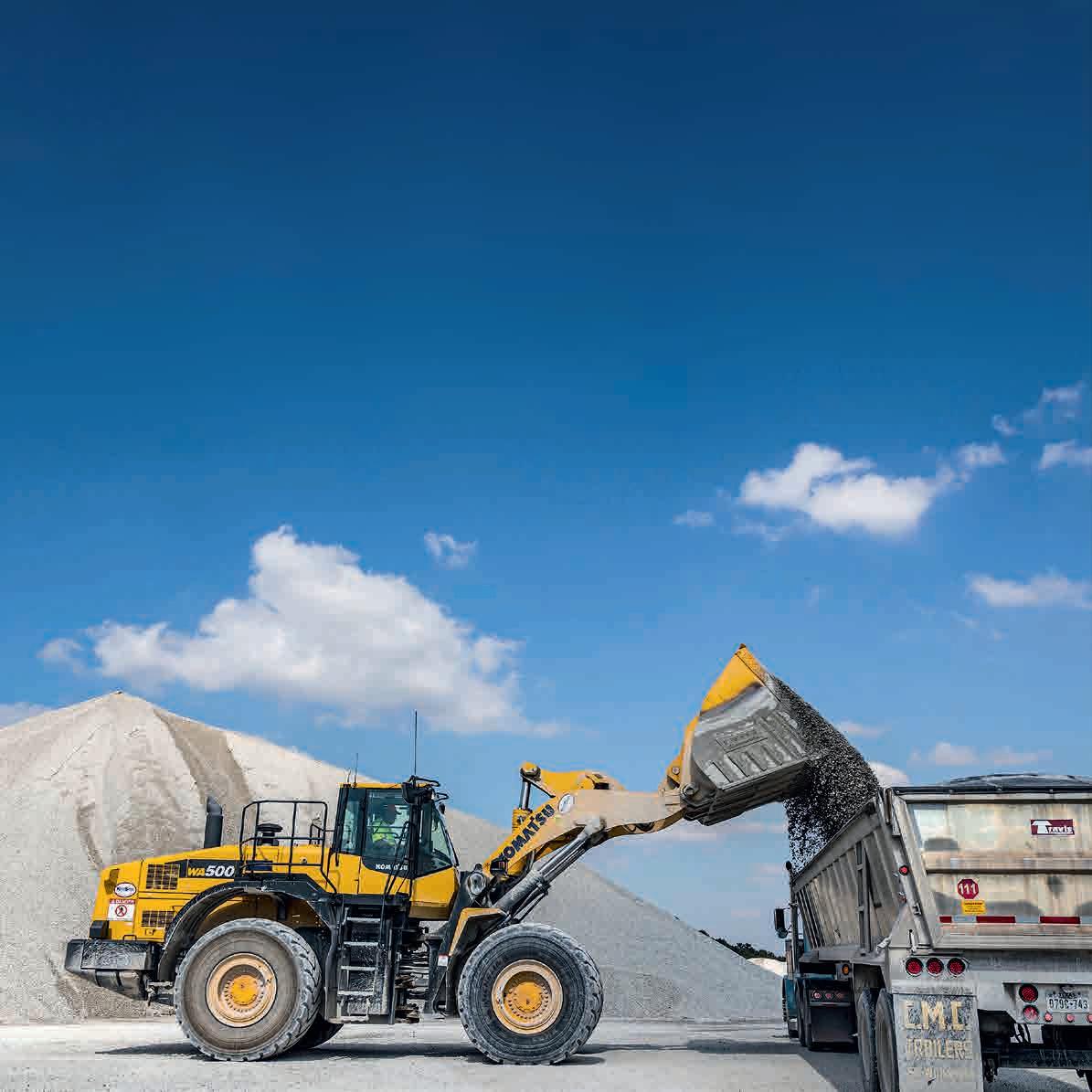
The Western and Southern Europe Group area
these mature markets, HeidelbergCement,
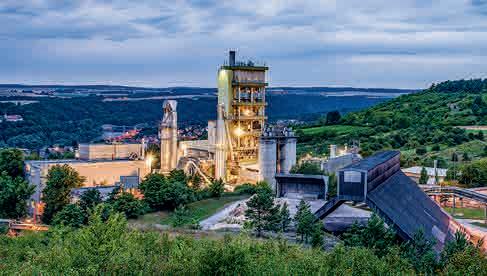
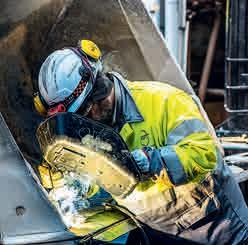
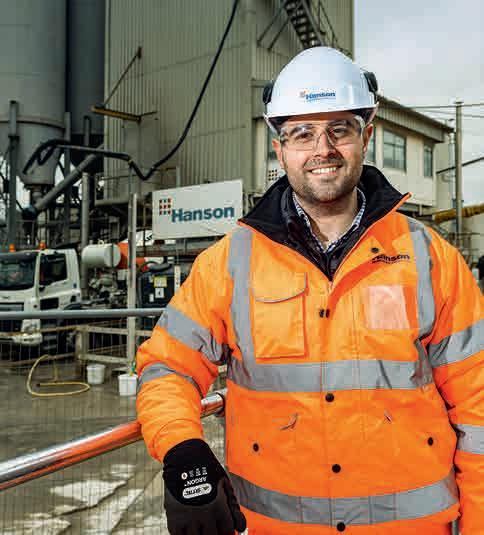
produces cement, aggre
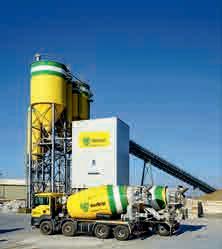
a fully integrated building materials
ready-mixed
as well as
in the United
Denmark, Estonia, Iceland, Latvia, Lithuania, Norway, Sweden; Albania, Bosnia-Herzegovina, Bulgaria, Croatia, Czech Republic, Georgia, Greece, Hungary, Kazakhstan, Poland, Romania, Russia, Slovakia
HeidelbergCement operates in 20 countries in the Northern and Eastern Europe-Central Asia Group area. In many of these countries, we produce cement, aggregates and ready-mixed concrete as a fully integrated building materials company.
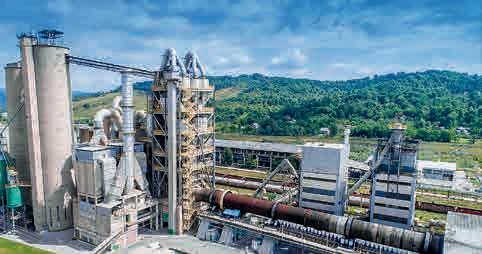
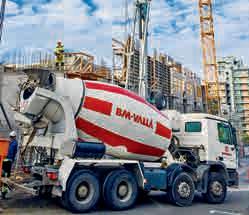
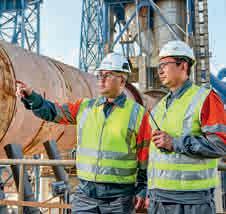
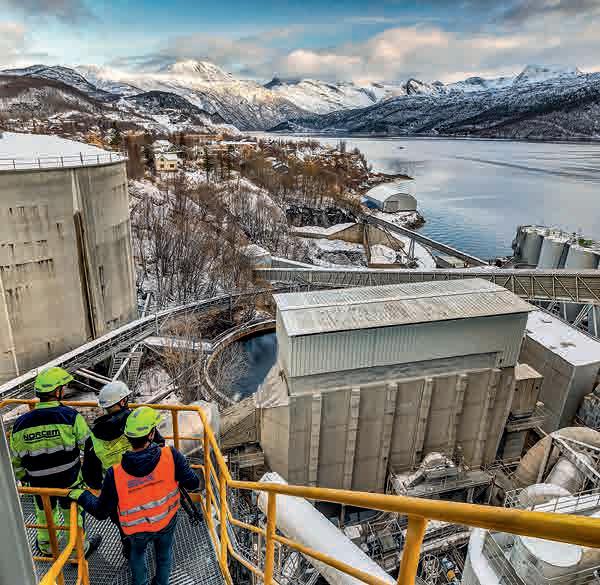
produce precast concrete elements in some countries.
the countries where we produce cement,
are market leaders or occupy leading positions. Sweden, Norway, Poland, Romania
the highest revenue generating countries in this Group area.
the Czech Republic
Canada, USA
The USA and Canada form the North America Group area. In this market area with the second highest revenue generation in the Group, we are one of the leading manufacturers of cement, aggregates and ready-mixed concrete. We also produce asphalt in both countries and concrete pipes in Canada.
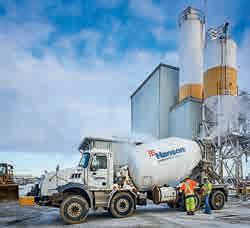
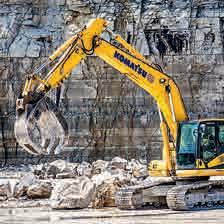
HeidelbergCement has production sites across the North American continent, with a focus on the eastern half of the US, Texas, the Gulf of Mexico, western Canada and Ontario.
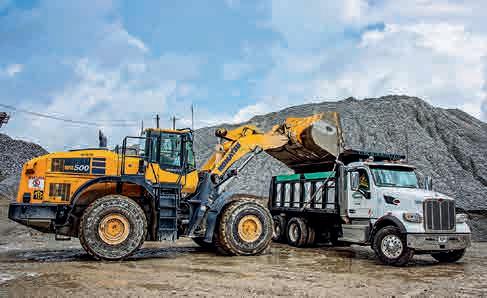
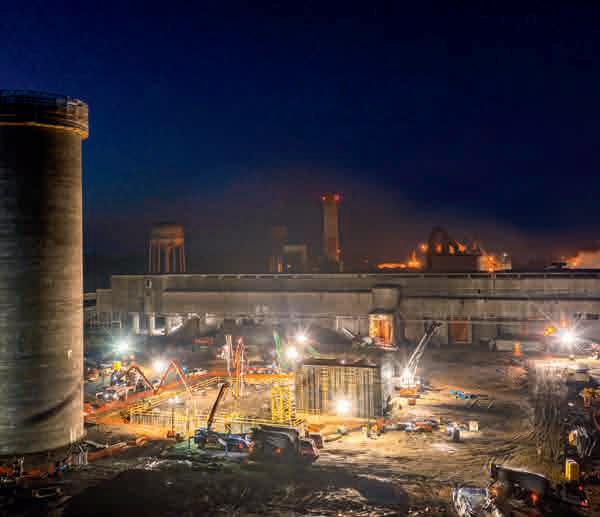
Sales volumes
Cement and clinker
Ready-mixed concrete
Revenue in the Group area
Total revenue
Number of plants
Cement
Ready-mixed concrete
Bangladesh, Brunei, China, India, Indonesia, Malaysia, Singapore, Thailand; Australia
The Asia-Pacific Group area comprises nine countries. The focus of our business in Indonesia, India, Thailand, Bangladesh and Brunei is on cement production. In Australia, Malaysia and Indonesia, we are also active in ready-mixed concrete and aggregates, and we produce ready-mixed concrete in Thailand as well as asphalt in Malaysia and Australia. Australia and Indonesia generate the highest revenue in this Group area.
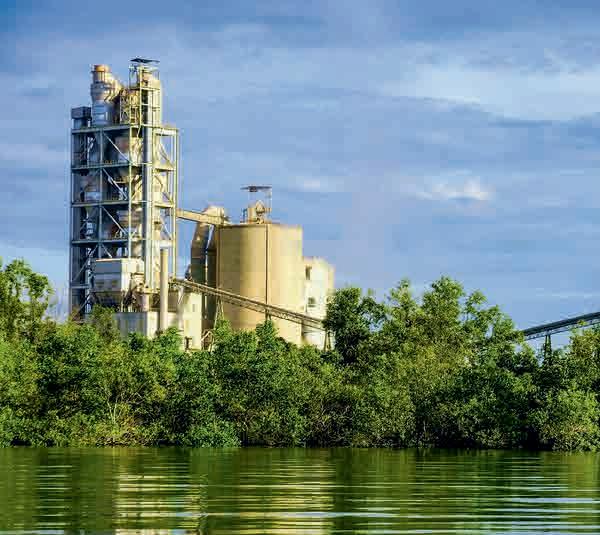
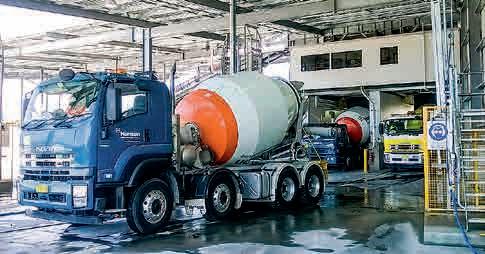
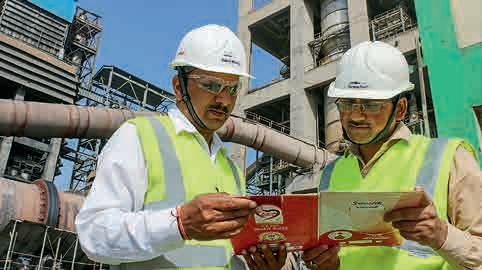
Benin, Burkina Faso, DR Congo, Egypt, Gambia, Ghana, Liberia, Morocco, Mozambique, Sierra Leone, South Africa, Tanzania, Togo; Israel, Palestine, Turkey
The Africa-Eastern Mediterranean Basin Group area comprises 16 countries. While we mainly produce cement in the countries south of the Sahara, where we are among the four largest cement producers, in North Africa – Morocco and Egypt – we are active in both cement and ready-mixed concrete. In Morocco, we also produce aggregates. The top revenue generators in this Group area are Morocco, Ghana, Egypt and Togo.
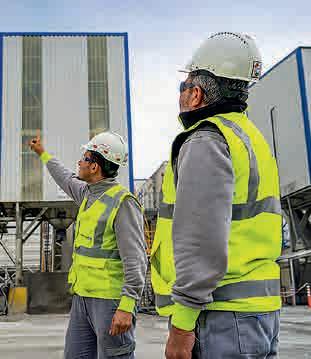
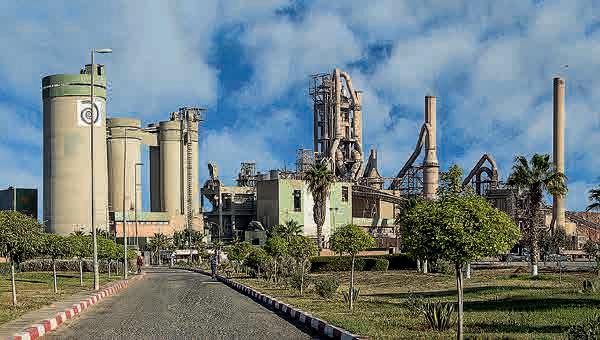
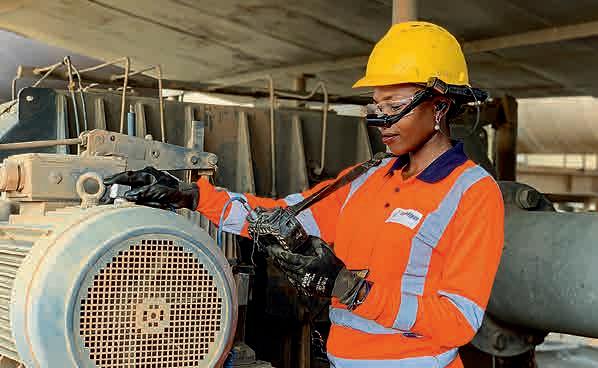
In the Eastern Mediterranean, our activities extend primarily to Israel and Turkey. In Israel, we produce mainly aggregates and ready-mixed concrete – but also asphalt. Our joint venture Akçansa in Turkey is one of the largest cement producers in the country and is active in the ready-mixed concrete and aggregates business as well.
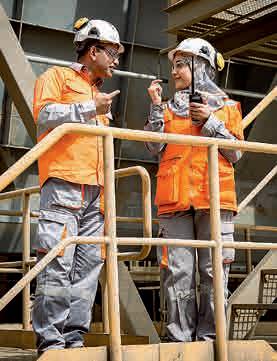
Group Services mainly comprises the activities of the HC Trading Group (HCT), one of the world’s largest trading companies, pri marily for cement, clinker and cementitious secondary materials. HCT also trades in solid and alternative fuels as well as other construction materials and additives.
The business unit’s primary task is the international purchasing, transport and sale of bulk goods for HeidelbergCement Group by sea.
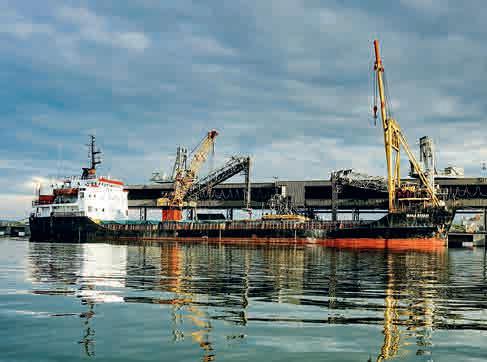
HCT’s 2020 trade volume was 23 million tonnes, transported in more than 1,200 ship deliveries to its customers in around 80 countries.
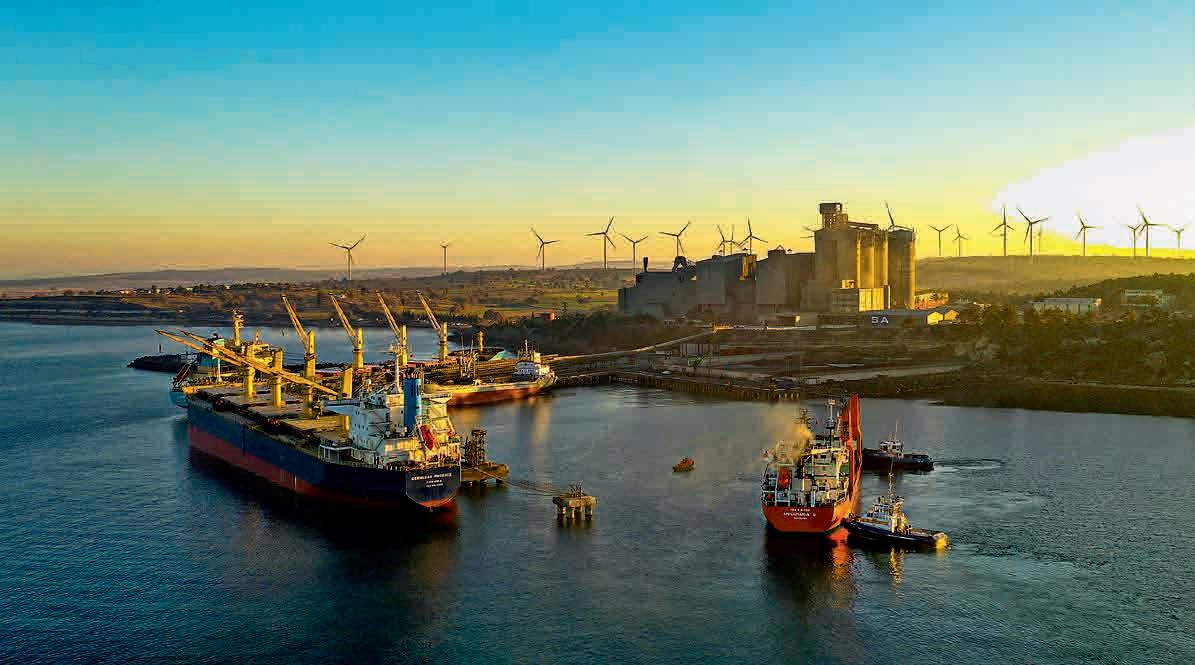
€bn
Group revenue
Result from current operations
Result from current operations
of
Cement and clinker sales volumes
Aggregates sales volume
Ready-mixed concrete sales
volume
1)
© 2021 HeidelbergCement AG
Berliner Strasse 6 69120 Heidelberg www.heidelbergcement.com
Contact:
Group Communication
Phone: + 49 (0) 6221 481-13227
Fax: + 49 (0) 6221 481-13217
E-Mail: info@heidelbergcement.com
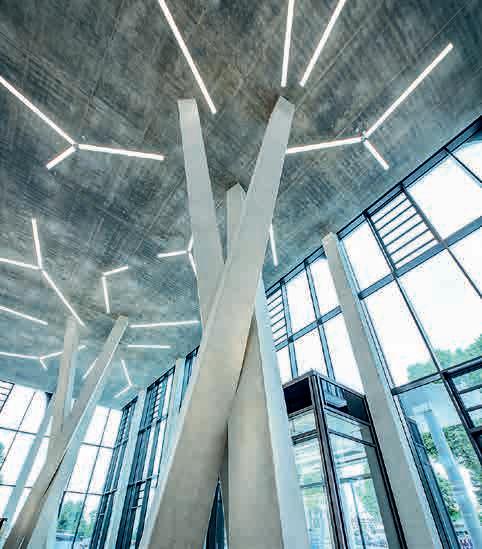
Phone institutional investors: + 49 (0) 6221 481-13925
+ 49 (0) 6221 481- 41016
+ 49 (0) 6221 481- 39568
Phone private investors: + 49 (0) 6221 481-13256
E-Mail: ir-info@heidelbergcement.com
HeidelbergCement photo archives; Bora Bozkurt, Turkey: page 32 / 33 bottom; Kurt Deery, Union Bridge / USA: page 13 center left; Maria Camila Escobar Alvaran, Beaucaire / France: page 19 top; Steffen Fuchs, Heidelberg / Germany: pages 2, 3, 13 bottom, 22 bottom and 34; Andrew Harper, Castalia / USA: page 19 bottom; Kevin Hudson, Hudson’s Photography, Bedford, Indiana / USA: page 27 bottom; Omary Kiguta, Dar es Salaam / Tanzania: page 31 bottom; Pete Lacker, Dallas / USA: pages 18 and 20 / 21; Dirk Meyer, Saarlouis / Germany: cover; Audrey K. Noe, Atlanta, USA: page 27 center; Marion von Oppeln, Germany: page 16 bottom; James Pike, UK: page: 23; Paul Poels, Meerlo / Netherlands: page 15; Kalle Punsvik, Narvik / Norway: page 24; Michael Rasche, Dort mund / Germany, page 5; Adrian Sulyok, Bucharest / Romania: page 25 bottom; Carole and Roy Timm, Vineland, Ontario / Canada: page 27 top left, Fabio Toschi, Bergamo / Italy: pages 13 top and 22 top right; Radek Úlehla, Prague / Czech Republic, pages 6 / 7; Viktor Yevstifeyev, Shymkent / Kazakhstan: page 25 top right.
otherwise indicated,
figures refer to the financial year of
and printing errors reserved.
